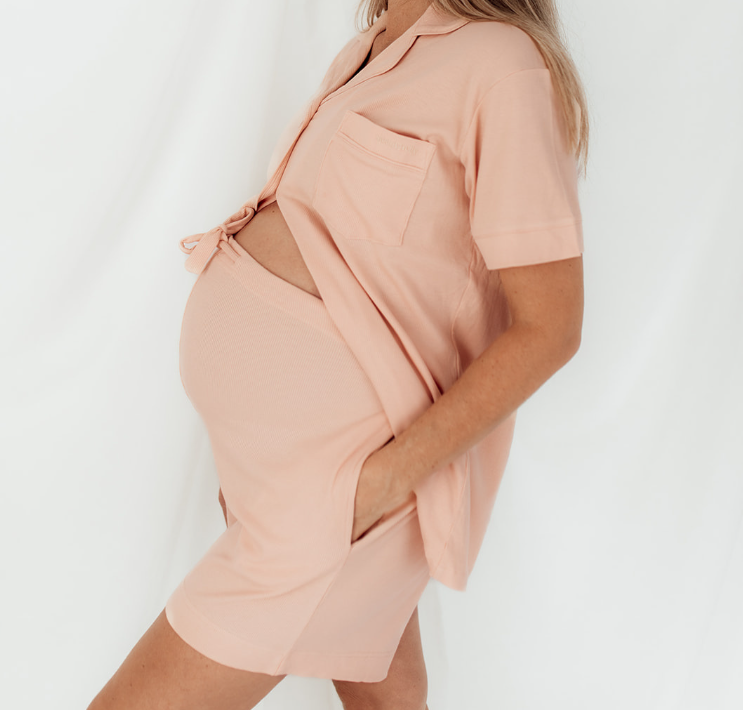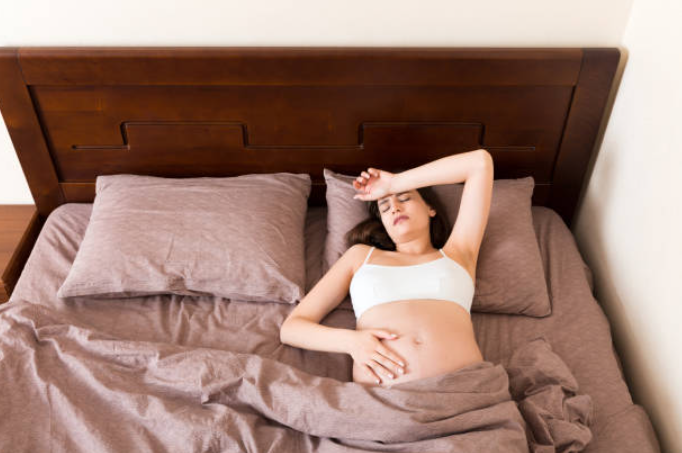Can your phone really keep you (and your bump) up at night? Here’s the gentle, science‑informed lowdown—and practical fixes you can start tonight.
Between late‑night baby name searches and endless nursery inspo, screens can sneak into every corner of pregnancy. Blue light—especially from phones and tablets—can nudge your brain to feel like it’s “daytime” when it’s clearly bedtime. The goal isn’t to ditch your devices completely; it’s to use them smarter so you fall asleep easier, stay asleep longer, and wake up a touch fresher.
Note: This guide is general information only and not medical advice. Always speak with your GP, midwife, or obstetrician about your circumstances.

First up: what is blue light, really?
-
Blue light is a short‑wavelength light (around 400–495 nm) naturally present in daylight. It’s not “bad”—in fact, it helps regulate your circadian rhythm and boost alertness in the morning.
-
The issue is timing and intensity. Bright, close‑range blue‑heavy light from phones, tablets, and laptops at night can suppress melatonin, the hormone that helps you feel sleepy.
-
During pregnancy, when sleep is already lighter and more fragmented, even small barriers to melatonin can tip you into the “tired but wired” zone.
Good news: small changes to your evening screen habits can make a noticeable difference within days.
How blue light can impact pregnancy sleep
-
Makes it harder to “switch off”: melatonin suppression delays sleep onset, so you lie in bed longer before drifting off.
-
More wake‑ups feel bigger: once you’re awake at 1–3 am, a quick phone check can cue alertness again, dragging out the wake window.
-
Morning grogginess: later sleep onset and fragmented sleep can pile on fatigue, which hits harder when you’re pregnant.
Remember: it’s a spectrum, not an all‑or‑nothing rule. The closer the screen, the brighter the light, and the longer the exposure, the stronger the effect.
Simple blue‑light fixes that actually work
Try these gentle, low‑effort changes for 7 nights and notice what shifts.
-
Set a screen sunset: switch devices to night mode and reduce brightness 90 minutes before bed. Most phones let you schedule this automatically.
-
Go hands‑off: keep your charger outside the bedroom or across the room so “just one scroll” is less tempting.
-
Paper beats pixels: keep a book or a low‑stakes magazine by the bed for wind‑down time.
-
Audio over visual: swap video for a short, calming podcast or audiobook with the screen off.
-
Night‑shift your home: dim lamps and use warmer bulbs after dinner to cue “evening” to your brain.
If you need to use your phone late:
-
Hold it further away (distance reduces light intensity dramatically).
-
Use “red shift” or “colour filter” settings if your device has them.
-
Keep one eye half‑closed—sounds odd, but it reduces total light exposure and many people find it helps.

A pregnancy‑friendly bedtime routine with less blue light
Aim for a predictable, calming 30–45 minutes before bed. Think: fewer pixels, more peace.
-
Lukewarm shower: gently lowers skin temperature.
-
Light snack if needed: protein + complex carb (e.g., yoghurt and oats) to smooth overnight dips.
-
Five gentle stretches for hips and back, plus slow belly breathing.
-
A page or two of reading, or jot tomorrow’s to‑dos so your brain isn’t planning at 2 am.
-
Lights low. Phone out of reach. Alarm set and done.
If you wake overnight:
-
Avoid the bright phone check. Try a soft, warm night light, sip water, retuck your bump/back support, and breathe slowly for a minute or two.
-
If your mind is racing, a single‑task audio (white noise, rainfall, or a 5‑minute body scan) can help without visual light.
Position, pillows, and why they still matter
Blue light is one piece of the puzzle; physical comfort is the other. After the first trimester, side‑sleeping is commonly recommended. A compact pregnancy pillow makes this easier so you’re not wrestling with your position when you put the phone down.
Try a three‑piece setup:
-
Slim wedge under the belly to reduce hip pull
-
Long back support curved along your spine to discourage rolling onto your back
-
Thin knee cushion to keep hips aligned
A breathable, modular design helps with airflow and reduces midnight heat build‑up. Many mums find the compact Sleepybelly Pregnancy Pillow gives them “held but not smothered” support, making it easier to settle quickly once the lights are low.
For temperature regulation, soft, moisture‑wicking sleepwear helps. Sleepybelly’s 3‑Piece Maternity Pyjama Set includes a short‑sleeve, button‑front top for feeding, and both shorts and pants so you can switch for warmer nights—keeping the room darker and cooler without multiple bedding changes.
Blue‑light myths and truths
-
“Blue‑blocking glasses fix everything.” Helpful, not magical. They reduce some blue wavelengths but don’t replace dimming screens, increasing distance, or limiting late‑night use.
-
“If I use night mode, I can scroll to sleep.” Night mode helps, but mental stimulation still wakes the brain. Swap social feeds for low‑stakes reading or audio.
-
“TV is just as bad as phones.” TVs are typically further away, so light intensity at the eye is lower than a phone at 20 cm. If you must, keep the room dim, sit further back, and set a hard stop time.
Partner‑friendly tweaks
-
Make “last phone check” a shared habit 60–90 minutes before bed.
-
Use separate alarms if one of you needs an earlier wake‑up; avoid bright screen checks that wake the other.
-
Keep lighting soft and consistent—warm lamps, no overhead glare.

When blue light isn’t the only culprit
If you’ve reduced evening screens and still struggle:
-
Look at caffeine timing (early afternoon cut‑off can help).
-
Reflux management (earlier, lighter dinners; slight torso elevation).
-
Daylight and movement: morning sun + a short walk can strengthen your sleep drive at night.
-
Persistent sleep issues, loud snoring, or breathing pauses? Speak with your healthcare provider.
Quick, screen‑smart checklist for tonight
-
Night mode is scheduled from early evening
-
Brightness down; device further away
-
One analogue wind‑down (book/journal)
-
Short audio option saved (screen off)
-
Phone out of arm’s reach by lights‑out
-
Room lighting is warm and dim
The gentle takeaway
Blue light isn’t the enemy—mistimed blue light is. Shift screens earlier, dim and warm your lighting, and trade late scrolling for simple, soothing rituals. Pair that with a comfy side‑sleep setup and breathable sleepwear, and you’ll stack the odds in favour of easier wind‑downs and deeper stretches of sleep—phone on do‑not‑disturb, mind at ease.



